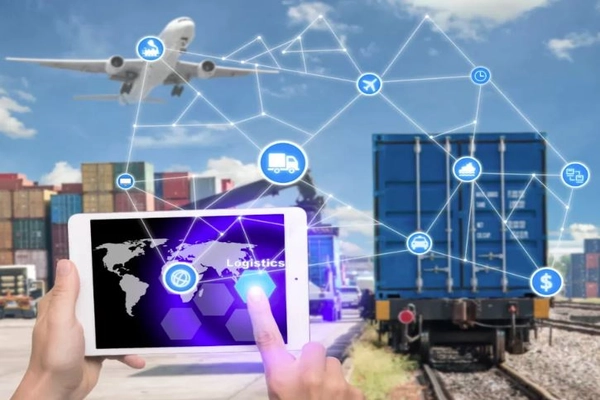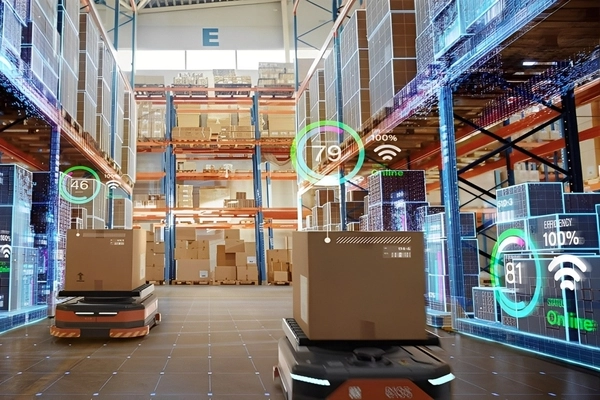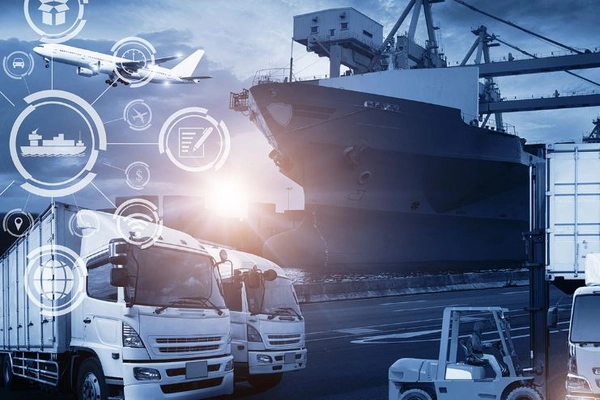In the context of Industry 4.0, IoT in logistics has become a key factor for businesses to enhance operational efficiency, reduce costs, and optimize supply chains. From monitoring transportation and managing warehouses to automating sorting processes, the Internet of Things (IoT) provides intelligent solutions based on real-time data. This article explores the concept, roles, practical applications, benefits and challenges, as well as the future prospects of IoT in logistics.
What is IoT in logistics?
IoT in logistics refers to the use of internet-connected devices, smart sensors, and data systems to monitor, control, and optimize the entire process of transportation and goods management. IoT systems in logistics collect data from transport vehicles, warehouses, storage equipment, and surrounding environments, enabling businesses to analyze, predict the status of goods, and make more accurate decisions.

The adoption of IoT is not just a technological upgrade but also a strategic shift that enables businesses to operate more flexibly, reduce waste, and enhance competitiveness in the logistics market. The main components of an IoT system include tracking sensors, GPS devices, operations management software, and data analytics platforms. These elements work together seamlessly to ensure the entire supply chain operates efficiently.
The role of IoT in logistics today
The role of IoT in logistics goes beyond data collection; it also helps businesses predict risks, automate processes, and improve service quality. With IoT, managers can monitor transportation status in real time, detect anomalies—from delivery delays to warehouse issues—and implement timely solutions.

Moreover, IoT supports data-driven decision-making, from planning transportation and managing assets and vehicles to optimizing energy use and costs. This enables logistics businesses to reduce operational expenses, improve service efficiency, and enhance customer experience. As a result, IoT is not only a technical tool but also a strategic factor in the development of modern logistics.
Applications of IoT in the logistics industry
The implementation of IoT in logistics brings a wide range of practical applications, from tracking shipments and managing warehouses to automating sorting and optimizing the supply chain. The following are some of the key applications:
Real-time tracking and transportation management
One of the most notable applications of IoT in logistics is real-time cargo tracking. IoT sensors installed on containers, pallets, or transport vehicles continuously update the location, speed, and status of goods. This allows businesses to know the exact transportation route, predict delivery times, and quickly respond to unexpected incidents.
Smart warehouse and storage condition management
IoT also enables smart warehouse management by monitoring temperature, humidity, lighting, and other environmental conditions. This is particularly important for sensitive goods such as food, pharmaceuticals, or electronic devices. If any condition exceeds allowable thresholds, the system immediately sends alerts, minimizing the risk of damage or loss.

Automating the sorting and transportation process
By combining IoT with automated robots, logistics companies can implement automated sorting and transportation processes within warehouses. IoT devices can read barcodes, RFID tags, or QR codes to guide robots in moving goods to the correct locations. This optimizes time, reduces labor requirements, and increases operational accuracy.
Integrating IoT and blockchain in supply chain management
IoT in logistics, when combined with blockchain, creates a transparent and secure supply chain management system. Data from IoT sensors is stored on the blockchain, ensuring integrity, immutability, and easy traceability of goods. This enhances trust with customers and partners while reducing the risk of fraud or information loss.
Applying IoT in autonomous vehicles and modern transport equipment
IoT also supports the development of modern transport vehicles such as self-driving trucks and smart equipment. IoT sensors and systems allow vehicles to detect their surroundings, optimize routes, and monitor operational conditions. This not only improves delivery efficiency but also reduces the risk of accidents and operational costs.

Using drones in goods delivery
In hard-to-reach areas or for urgent deliveries, IoT in logistics combined with drones enables more efficient goods transportation. Drones equipped with IoT sensors can navigate, avoid obstacles, and monitor the condition of goods during flight. This solution is particularly valuable for delivering medical supplies, fresh food, or to remote locations.
Benefits and challenges of applying IoT in logistics

Benefits
- Improved operational efficiency: Real-time tracking and management help reduce errors, optimize routes, and make better use of assets.
- Enhanced service quality: On-time deliveries and secure handling of goods improve customer experience.
- Cost reduction: Optimizing transportation, warehousing, and energy usage lowers labor and waste costs.
Challenges
- Initial investment costs: IoT requires devices, networks, and management software, so ROI must be carefully evaluated before implementation.
- Data security: Transportation and warehouse data are sensitive, requiring strong security measures.
- System integration: IoT devices must be compatible with existing management software and systems to avoid operational disruption.
- Staff training: Employees need training to operate, monitor, and analyze IoT data effectively.
Future development of IoT in logistics
The future of IoT in logistics promises to expand further with new technological trends. Smart logistics systems will integrate AI, big data, and blockchain to predict demand, optimize transportation routes, and manage warehouses automatically. Additionally, autonomous vehicles, drones, and robots will become common modes of transport, helping reduce costs and accelerate delivery speeds.

Thanks to these advancements, logistics companies can operate more efficiently, minimize risks, and enhance customer experience. IoT will no longer be just a supportive tool but will become a core foundation for transforming the entire supply chain into the digital era.
Beyond current applications, IoT in logistics opens up numerous opportunities for innovation in transportation and supply chain management. With real-time connectivity and data collection, businesses can forecast demand, optimize delivery routes, and improve warehouse efficiency. At the same time, IoT increases transparency, reduces the risk of loss, and enhances customer experience throughout the entire goods delivery process.
